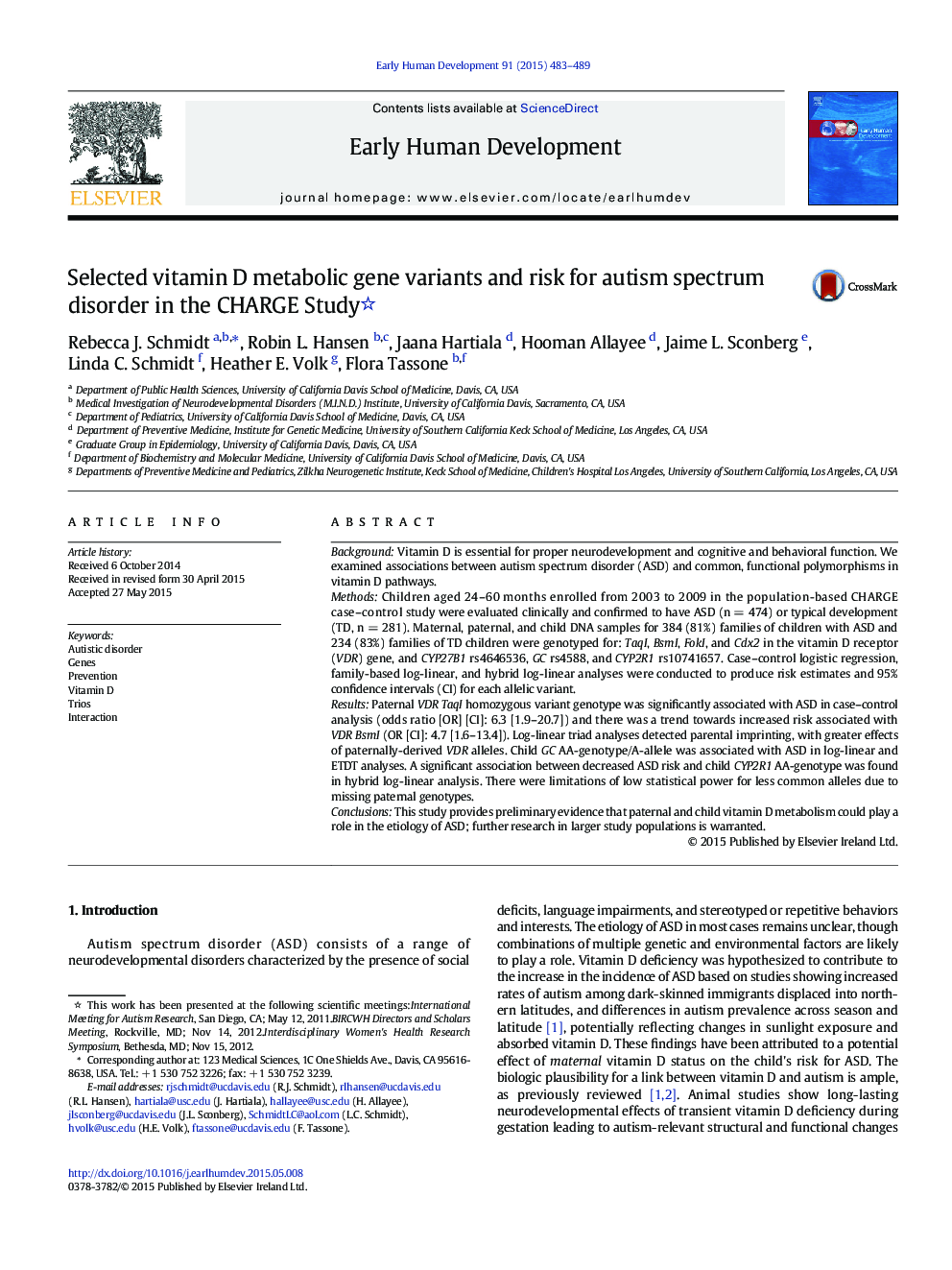| Article ID | Journal | Published Year | Pages | File Type |
|---|---|---|---|---|
| 3916409 | Early Human Development | 2015 | 7 Pages |
•First study of parental and child vitamin D pathway gene variants and autism•Child GC (VDBP) AA-genotype/A-allele was associated with increased autism risk•This suggests a role for vitamin D binding protein and lower plasma vitamin D in ASD•Some evidence for paternal VDR, other child genes, and interactions with intake•Independent replication of the findings in larger study samples is needed
BackgroundVitamin D is essential for proper neurodevelopment and cognitive and behavioral function. We examined associations between autism spectrum disorder (ASD) and common, functional polymorphisms in vitamin D pathways.MethodsChildren aged 24–60 months enrolled from 2003 to 2009 in the population-based CHARGE case–control study were evaluated clinically and confirmed to have ASD (n = 474) or typical development (TD, n = 281). Maternal, paternal, and child DNA samples for 384 (81%) families of children with ASD and 234 (83%) families of TD children were genotyped for: TaqI, BsmI, FokI, and Cdx2 in the vitamin D receptor (VDR) gene, and CYP27B1 rs4646536, GC rs4588, and CYP2R1 rs10741657. Case–control logistic regression, family-based log-linear, and hybrid log-linear analyses were conducted to produce risk estimates and 95% confidence intervals (CI) for each allelic variant.ResultsPaternal VDR TaqI homozygous variant genotype was significantly associated with ASD in case–control analysis (odds ratio [OR] [CI]: 6.3 [1.9–20.7]) and there was a trend towards increased risk associated with VDR BsmI (OR [CI]: 4.7 [1.6–13.4]). Log-linear triad analyses detected parental imprinting, with greater effects of paternally-derived VDR alleles. Child GC AA-genotype/A-allele was associated with ASD in log-linear and ETDT analyses. A significant association between decreased ASD risk and child CYP2R1 AA-genotype was found in hybrid log-linear analysis. There were limitations of low statistical power for less common alleles due to missing paternal genotypes.ConclusionsThis study provides preliminary evidence that paternal and child vitamin D metabolism could play a role in the etiology of ASD; further research in larger study populations is warranted.
